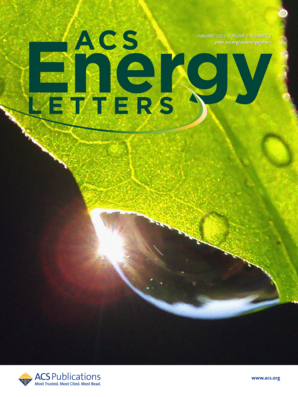cfim介导的选择性聚腺苷酸化重塑细胞信号传导和miRNA生物发生
IF 19.3
1区 材料科学
Q1 CHEMISTRY, PHYSICAL
引用次数: 7
摘要
哺乳动物卵裂因子I (CFIm)与多种情况下的选择性多聚腺苷化(APA)有关,从癌症到学习缺陷和寄生虫感染。为了确定CFIm表达水平如何转化为这些不同的表型,我们对细胞系进行了多组学分析,其中CFIm25 (NUDT21)或CFIm68 (CPSF6)亚基要么被sirna介导的敲低抑制,要么从稳定整合的构建体中过表达。我们确定bbb800基因在响应CFIm水平变化时经历连贯的APA,并且它们聚集在与蛋白质代谢相关的不同功能类中。ERK通路的活性追踪CFIm浓度,并解释了在CFIm扰动下观察到的细胞生长和代谢的一些波动。此外,编码miRNA通路蛋白的多个转录本是cfim依赖性APA的靶标。这导致mirna的生物发生和抑制活性增加,同时一些3 ' utr变得更短,可能对mirna介导的抑制不那么敏感。我们的研究首次系统地评估了一组核心的APA靶点,这些靶点对CFIm蛋白亚基水平(CFIm25/CFIm68)的变化做出了一致的反应。我们描述了CFIm下游引发的信号通路,这提高了我们对CFIm在整合RNA加工与其他细胞活动中的关键作用的理解。本文章由计算机程序翻译,如有差异,请以英文原文为准。
CFIm-mediated alternative polyadenylation remodels cellular signaling and miRNA biogenesis
Abstract The mammalian cleavage factor I (CFIm) has been implicated in alternative polyadenylation (APA) in a broad range of contexts, from cancers to learning deficits and parasite infections. To determine how the CFIm expression levels are translated into these diverse phenotypes, we carried out a multi-omics analysis of cell lines in which the CFIm25 (NUDT21) or CFIm68 (CPSF6) subunits were either repressed by siRNA-mediated knockdown or over-expressed from stably integrated constructs. We established that >800 genes undergo coherent APA in response to changes in CFIm levels, and they cluster in distinct functional classes related to protein metabolism. The activity of the ERK pathway traces the CFIm concentration, and explains some of the fluctuations in cell growth and metabolism that are observed upon CFIm perturbations. Furthermore, multiple transcripts encoding proteins from the miRNA pathway are targets of CFIm-dependent APA. This leads to an increased biogenesis and repressive activity of miRNAs at the same time as some 3′ UTRs become shorter and presumably less sensitive to miRNA-mediated repression. Our study provides a first systematic assessment of a core set of APA targets that respond coherently to changes in CFIm protein subunit levels (CFIm25/CFIm68). We describe the elicited signaling pathways downstream of CFIm, which improve our understanding of the key role of CFIm in integrating RNA processing with other cellular activities.
求助全文
通过发布文献求助,成功后即可免费获取论文全文。
去求助
来源期刊

ACS Energy Letters
Energy-Renewable Energy, Sustainability and the Environment
CiteScore
31.20
自引率
5.00%
发文量
469
审稿时长
1 months
期刊介绍:
ACS Energy Letters is a monthly journal that publishes papers reporting new scientific advances in energy research. The journal focuses on topics that are of interest to scientists working in the fundamental and applied sciences. Rapid publication is a central criterion for acceptance, and the journal is known for its quick publication times, with an average of 4-6 weeks from submission to web publication in As Soon As Publishable format.
ACS Energy Letters is ranked as the number one journal in the Web of Science Electrochemistry category. It also ranks within the top 10 journals for Physical Chemistry, Energy & Fuels, and Nanoscience & Nanotechnology.
The journal offers several types of articles, including Letters, Energy Express, Perspectives, Reviews, Editorials, Viewpoints and Energy Focus. Additionally, authors have the option to submit videos that summarize or support the information presented in a Perspective or Review article, which can be highlighted on the journal's website. ACS Energy Letters is abstracted and indexed in Chemical Abstracts Service/SciFinder, EBSCO-summon, PubMed, Web of Science, Scopus and Portico.
 求助内容:
求助内容: 应助结果提醒方式:
应助结果提醒方式:


